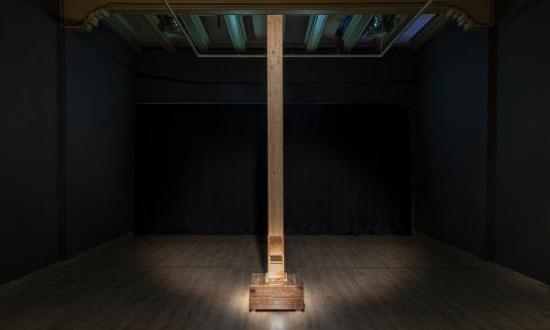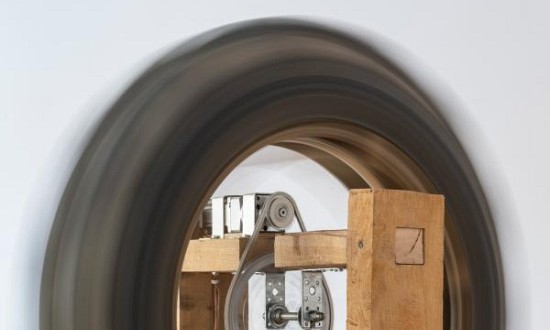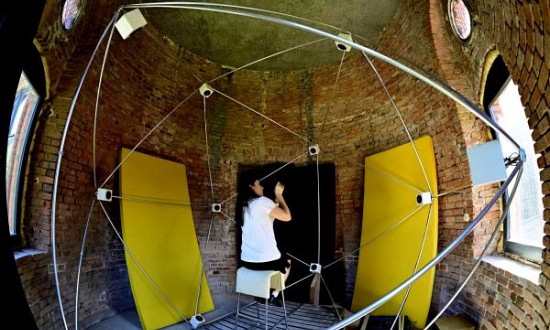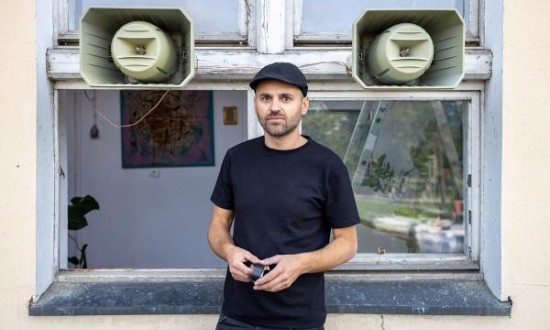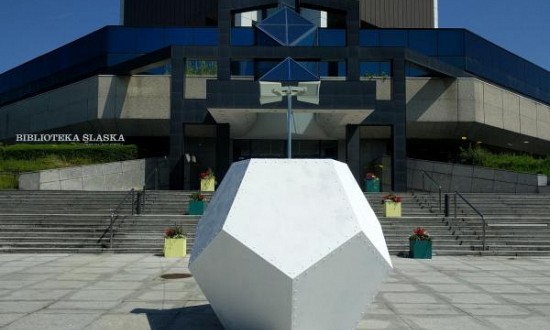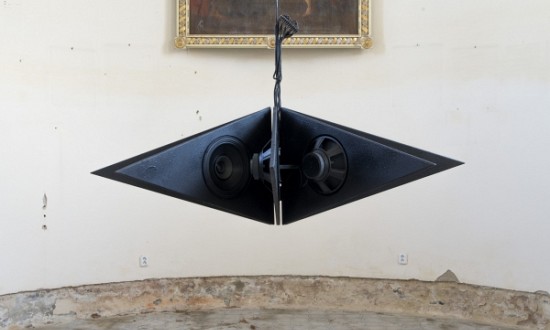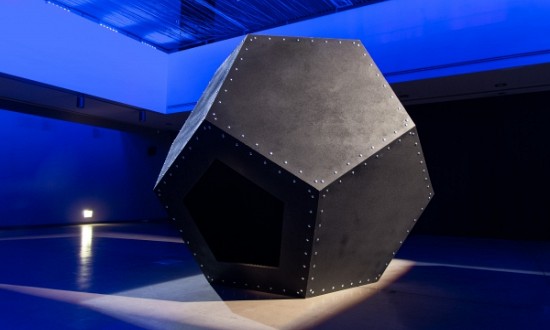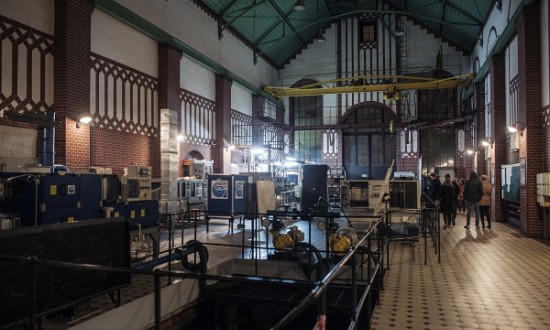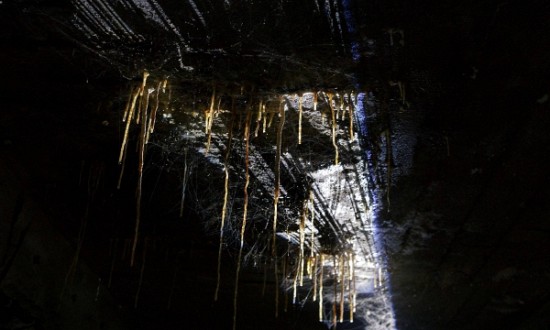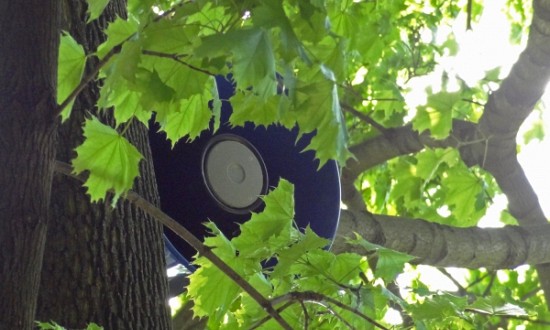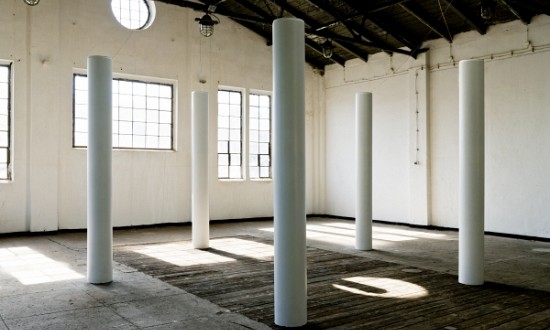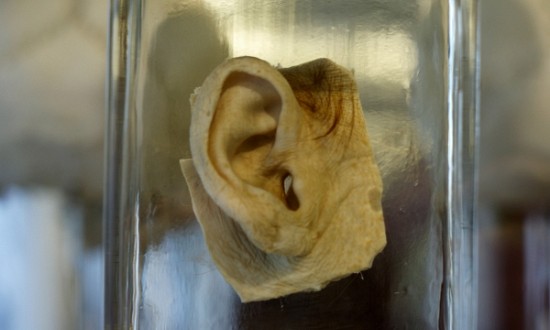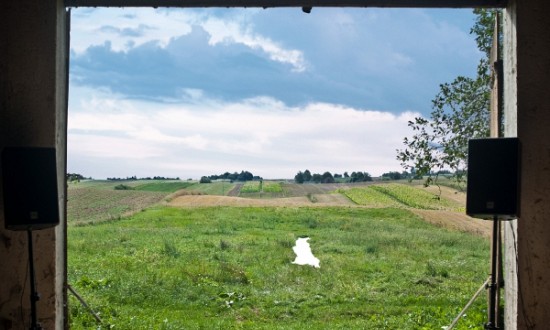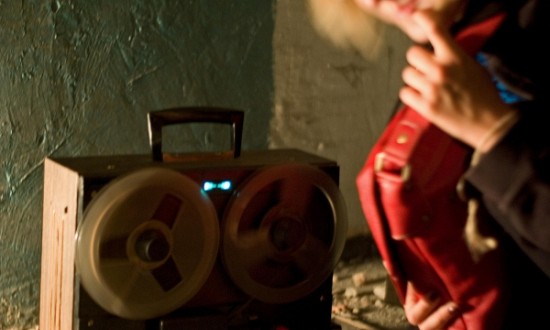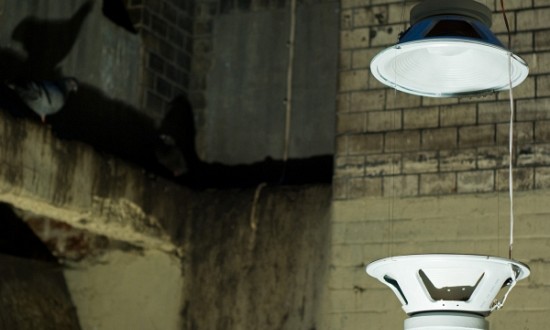Located on the Tamka island in Wrocław, Paweł Kulczyński’s work imitates the public information sound system by broadcasting utterly false messages into the city space with the utmost seriousness. The announcements can be immediately verified as blatant lies on the basis of rudimentary knowledge about the world. This tactic violates in real time our belief in the truthfulness of media announcements from allegedly reliable sources.
To assess the veracity of the broadcast, no reflection is required; the instinctive experience of cognitive dissonance simultaneously causes a gasp and brings satisfaction in exposing the untruth.
The Orwellian title makes a direct reference to the rich history of propaganda (in which public address systems were effective tools of spreading disinformation at rallies, in workplaces or educational institutions), while sharing an affinity with the lightness of the avant-garde performance. This strategy avoids the temptation of putting on airs in theoretical writings, and instead opts for pressing the right levers to give vent to the inflated context, hinting at the legacy of the Orange Alternative in Wrocław.
The temporary “radio station” broadcasts short messages recorded by a professional actress, read out with the full solemnity of the office or somewhat ironically, perversely or with surprise. In this way, a subtle game of meanings is initiated, playing with different interpretations of each of the slogans repeated as part of ephemeral episodes at quarter-hour intervals from 8 a.m. to 8 p.m. – like a clock with chimes.
Phrases such as “Autocracy is democracy,” “Disease is health” or “Wisdom is stupidity” are preceded by the introductions “The ministry informs” or “The institute informs.” The non-existent ministry or institute functions as a representative of the broadly understood system of authority, which compulsively produces new “axioms” for domestic and public use, during the week and at the weekend, for social and national needs, and above all – for its own.
All phrases read and interpreted by Marta Zięba.
Contemporary Lynx short interview:
https://contemporarylynx.co.uk/where-art-confronts-propaganda-the-artifake-project
KB: Why did you decide to focus on the role of audio messages in creating propaganda?
Paweł Kulczyński: Above all, because I’m a sound artist but, depending on circumstances, this area might significantly expand. Since the visual messages dominate in the public sphere, the space left for sound is usually less dense. It is easier to draw people’s attention by changing audiosphere when there are fewer competing stimuli. It is also impossible to “hear away” as we don’t have equivalents for eyelids in our ears and in a way, we are made to participate. Sound can therefore be used to act effectively over a large city area, even if such an action is non-invasive and intermittent. Thus, the effectiveness of promoting content through this medium is high.
KB: What was the inspiration behind the fake statements coming from the speakers?
PK: They were inspired by the history of totalitarian countries, where over the years, sound has been the cheapest vehicle for disseminating propaganda, and the speeches of communist secretary generals were rumbling at different times in many market squares on almost every continent. Radio broadcasting systems were widespread in the large workplaces in the Eastern Bloc after 1945 and some cities are still covered with megaphones, like the Czech Republic for example. The recent inspiration were dystopian-like messages emitted from the police LRAD systems during the epidemic, which were reminiscent of scenes from Blade Runner.
KB: What would you like to impress on the passers-by exposed to such statements?
PK: Working on “2+2=5”, I hoped to reach the widest possible audience, using messages that do not require special competence. Thus, trivial non-truths clash here with simple logic, resulting in a reflexive opposition of the cognitive apparatus and undermining the acquired conviction of the veracity of media messages. Observing reactions of passers-by, I could convince myself of the effectiveness of such tactics. My messages evoke humorous comments but also grumbling or irritation.
Paweł Kulczyński
2+2=5
Instalacja dźwiękowa w przestrzeni publicznej w ramach projektu ARTIFAKE 2021
Umiejscowiona na wrocławskiej Tamce praca Pawła Kulczyńskiego polega na sfingowaniu systemu dźwiękowej informacji publicznej, z powagą emitującego w przestrzeń miejską jawnie fałszywe komunikaty – natychmiast weryfikowalne jako kłamliwe na podstawie bazowej wiedzy każdego odbiorcy o świecie. Tego rodzaju taktyka narusza w czasie rzeczywistym wpojone nam przekonanie o prawdziwości medialnych ogłoszeń, płynących z rzekomo wiarygodnych źródeł.
Dla oceny prawdziwości emitowanego komunikatu niepotrzebna jest żadna refleksja; odruchowe doświadczenie dysonansu poznawczego powoduje żachnięcie, przynosząc jednocześnie zadowolenie z demaskacji nieprawdy.
Orwellowski tytuł wprost odwołuje się do rozległej historii propagandy (w której systemy radiowęzłowe zapisały się jako skuteczne narzędzia kolportowania dezinformacji na wiecach, w zakładach pracy czy placówkach edukacyjnych), zachowując jednak powinowactwo z performatywną lekkością awangardy, nie nadymającej się nadmiernie w publicystyce, a jedynie przykładającej właściwy lewar do nabrzmiałego kontekstu – wrocławska spuścizna Pomarańczowej Alternatywy staje się tu na powrót użyteczna.
Tymczasowy „radiowęzeł” emituje krótkie komunikaty nagrane przez profesjonalną aktorkę, czytane z pełną powagą urzędu lub odrobinę ironicznie, czasem przekornie lub ze zdziwieniem, budując tym samym subtelną grę znaczeniami, na różne sposoby interpretując każde z haseł powtarzanych w ramach efemerycznych epizodów w kwadransowych interwałach w godz. od 8.00 do 20.00 – na podobieństwo zegara z kurantami.
Sformułowania w rodzaju „Autokracja to demokracja”, „Choroba to zdrowie” lub „Mądrość to głupota” poprzedzone są adnotacją „Ministerstwo informuje” lub „Instytut informuje”. Wyobrażone ministerstwo oraz instytut występują tu w roli reprezentantów szeroko pojętej władzy kompulsywnie produkującej nowe „aksjomaty” na użytek domowy i publiczny, codzienny i od święta, dla potrzeb społecznych i narodowych, a przede wszystkim – własnych.
Komunikaty czyta i interpretuje Marta Zięba.


